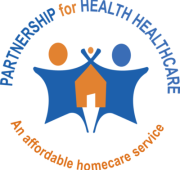As we age, our body undergoes many changes, and one of the most common changes is hypertension or high blood pressure. Hypertension is a major risk factor for cardiovascular disease, which is the leading cause of death in older adults. In this article, we will explore the link between hypertension and cardiovascular disease in older adults and what steps can be taken to reduce the risk.
What is Hypertension?
Hypertension, or high blood pressure, is a condition where the force of blood against the walls of the arteries is consistently too high. Blood pressure is measured in millimeters of mercury (mmHg), and a reading of 140/90 mmHg or higher is considered high blood pressure. Hypertension can damage the arteries and increase the risk of cardiovascular disease.
What is Cardiovascular Disease?
Cardiovascular disease (CVD) refers to a group of conditions that affect the heart and blood vessels, including coronary artery disease, heart failure, and stroke. CVD is the leading cause of death in older adults, and hypertension is a major risk factor for developing CVD.
The Link between Hypertension and Cardiovascular Disease in Older Adults
Hypertension can damage the blood vessels and lead to the development of CVD. Over time, the high pressure can cause the walls of the arteries to become stiff and thick, which makes it harder for blood to flow through them. This can lead to the development of plaque, which is a buildup of cholesterol and other substances in the arteries. Plaque can narrow the arteries and increase the risk of heart attack and stroke.
Older adults are at an increased risk of developing hypertension and CVD due to the aging process. As we age, our blood vessels become less flexible, which can increase blood pressure. Additionally, older adults are more likely to have other risk factors for hypertension and CVD, such as obesity, diabetes, and a sedentary lifestyle.
Reducing the Risk of Hypertension and Cardiovascular Disease
There are many steps that older adults can take to reduce their risk of hypertension and CVD. These include:
- Eating a healthy diet: A diet that is low in saturated and trans fats, cholesterol, and salt can help reduce blood pressure and lower the risk of CVD.
- Staying physically active: Regular exercise can help lower blood pressure and reduce the risk of CVD.
- Maintaining a healthy weight: Being overweight or obese increases the risk of hypertension and CVD. Maintaining a healthy weight through diet and exercise can help reduce this risk.
- Managing stress: Chronic stress can increase blood pressure and increase the risk of CVD. Practicing relaxation techniques such as deep breathing, meditation, or yoga can help reduce stress and lower blood pressure.
- Taking medication as prescribed: If medication is prescribed to treat hypertension or CVD, it is important to take it as prescribed to help reduce the risk of complications.
Conclusion
Hypertension is a major risk factor for cardiovascular disease in older adults. As we age, our risk of developing hypertension and CVD increases, but there are steps that can be taken to reduce this risk. By following a healthy lifestyle and taking medication as prescribed, older adults can reduce their risk of hypertension and CVD and improve their overall health and well-being.
Home Care Near Me Let’s Get Started!
Get Immediate Help with Information, Costs & Payment Options.



Recent Comments